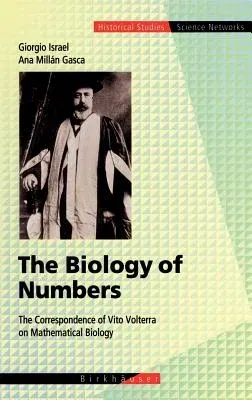Giorgio Israel
(Author)The Biology of Numbers: The Correspondence of Vito Volterra on Mathematical Biology (2002)Hardcover - 2002, 1 January 2002

Qty
1
Turbo
Ships in 2 - 3 days
In Stock
Free Delivery
Cash on Delivery
15 Days
Free Returns
Secure Checkout

Part of Series
Science Networks. Historical Studies
Part of Series
Science Networks: Historical Studies
Part of Series
Science Networks. Historical Studies Science Networks. Histo
Print Length
405 pages
Language
English
Publisher
Birkhauser
Date Published
1 Jan 2002
ISBN-10
3764365145
ISBN-13
9783764365141
Description
Product Details
Authors:
Book Edition:
2002
Book Format:
Hardcover
Country of Origin:
US
Date Published:
1 January 2002
Dimensions:
23.39 x
15.6 x
2.39 cm
ISBN-10:
3764365145
ISBN-13:
9783764365141
Language:
English
Location:
Basel
Pages:
405
Publisher:
Series:
Weight:
762.03 gm